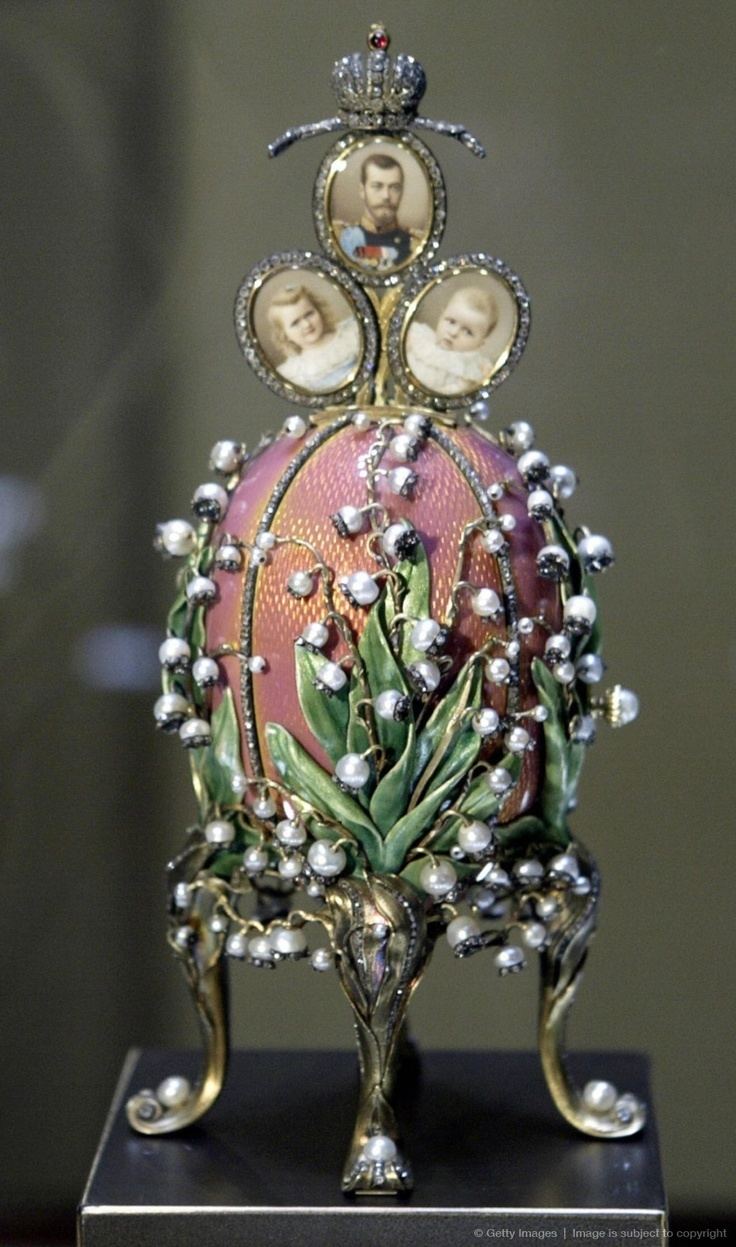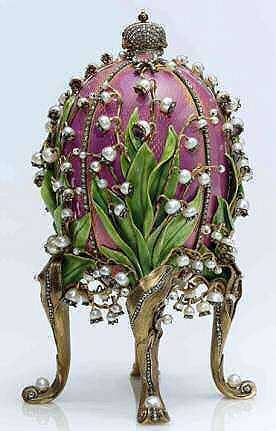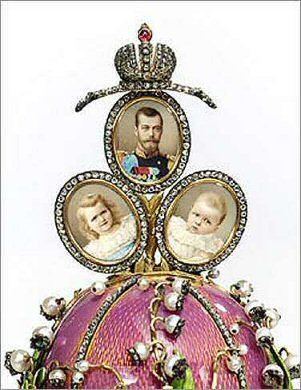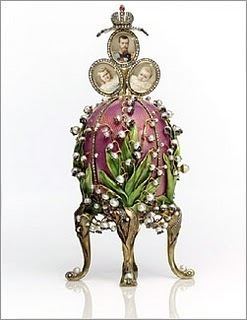Year delivered 1898 | Year of acquisition 2004 | |
Individual or institution The Link of Times Foundation, Russia Materials used enamel, gold, diamonds, rubies, pearls Height 15.1 centimetres (5.9 in) when closed, 19.9 centimetres (7.8 in) when opened Similar Imperial Coronation Egg, Renaissance, Rosebud, Bay Tree, First Hen Egg | ||
The Lilies of the Valley Egg is a jewelled Fabergé egg made under the supervision of the Russian jeweller Peter Carl Fabergé in 1898 by Fabergé ateliers. The supervising goldsmith was Michael Perchin. The egg is one of the two eggs in the Art Nouveau style (the other is the Pansy Egg). It was presented on April 5 to Tsar Nicholas II, who gave it as a gift to his wife, the Tsarina, Empress Alexandra Fyodorovna. The egg is part of the Victor Vekselberg Collection, owned by The Link of Times Foundation and housed in the Fabergé Museum in Saint Petersburg, Russia.
Contents
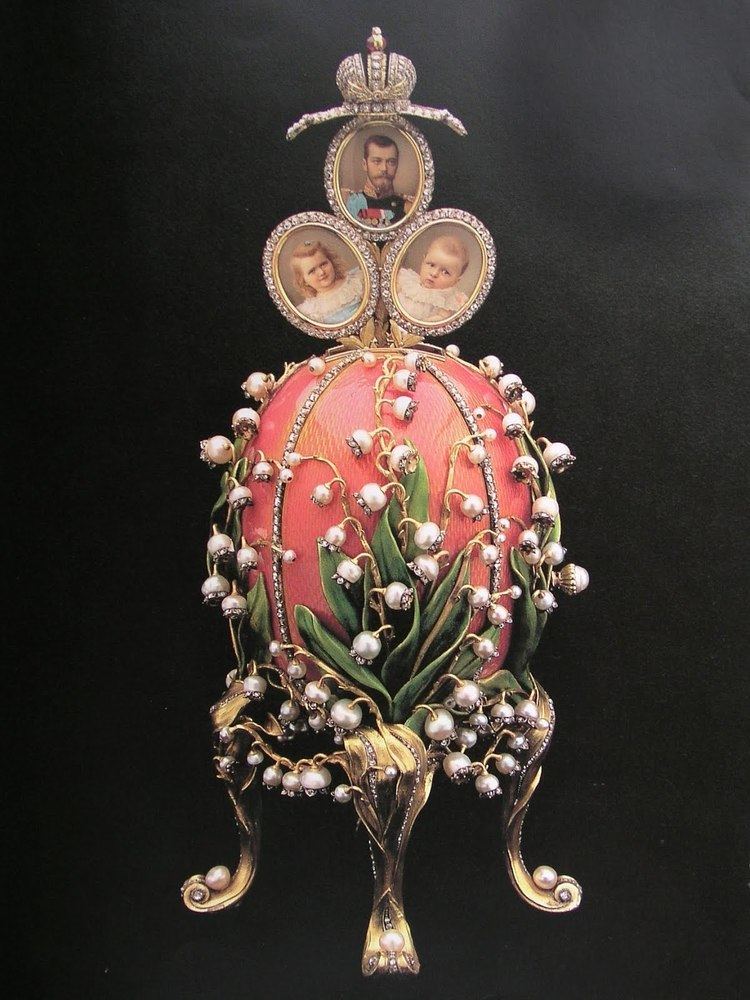
Craftsmanship
The egg is covered in pearls and topped with rose pink enamel on a guilloché field. The egg is supported by cabriolet legs of green-gold leaves with rose-cut diamond dewdrops. The gold-stemmed lilies have green enameled leaves and flowers made of gold set with rubies, pearls, and diamonds.
Surprise
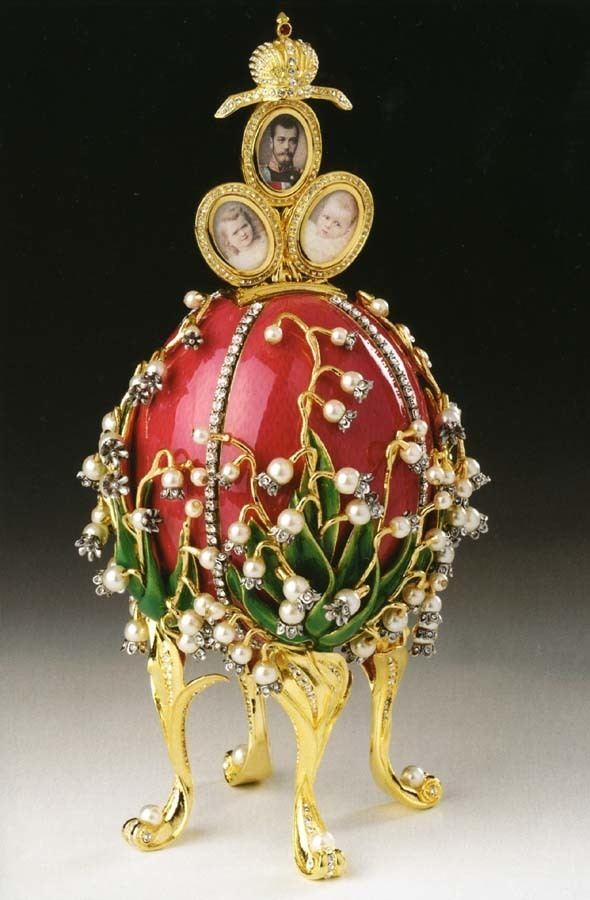
This egg's surprise is 'elevated' out of the egg by twisting a gold-mounted pearl button. When fully raised, three portraits are visible under the Imperial crown set with a ruby: Tsar Nicholas II and his two oldest daughters, Olga and Tatiana, painted on ivory by Johannes Zehngraf. The portraits are framed in rose diamonds and backed with gold panels engraved with the presentation date of July 31, 1898.
